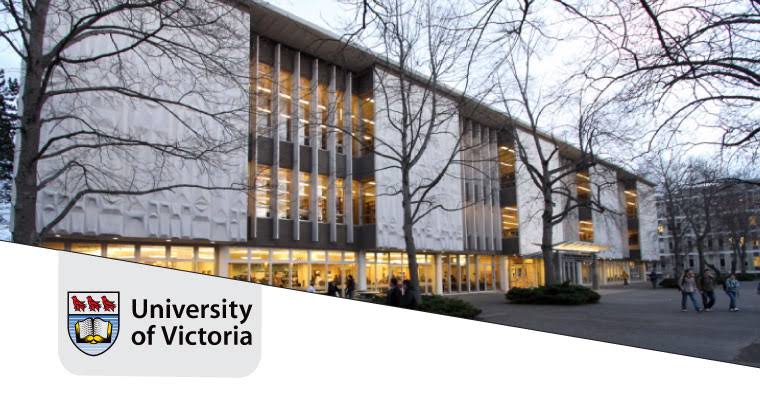A Canadian study permit is an official document issued by Immigration, Refugees and Citizenship Canada (IRCC) that allows international students to study at designated institutions in Canada. It is not a visa but a condition for staying in the country legally as a student.
To be eligible, an applicant must be accepted into a Designated Learning Institution (DLI). Without a valid study permit, students cannot enroll in full-time academic programs that last more than six months.
As of July 2025, Canada continues to attract a high volume of international students due to its high-quality education system, work opportunities, and inclusive immigration pathways.
Step 1: Gaining Admission into a Designated Learning Institution
The first and most crucial step is securing admission into a DLI. These are colleges or universities approved by the Canadian government to host international students. The full list of DLIs is available on the official IRCC website.
Applicants must research programs that match their academic goals and career plans. Once a suitable institution is found, the student must submit an application along with academic transcripts, language test scores (usually IELTS or TOEFL), and other required documents.
In 2025, most DLIs accept applications through centralized online platforms, and some even partner with global student recruitment agencies for easier processing.
Step 2: Receiving the Letter of Acceptance
After evaluation, if the student meets the academic and language requirements, the institution issues a Letter of Acceptance (LOA). This document is essential for the study permit application and must include specific details such as program duration, tuition fees, and start date.
Students should verify that the LOA contains the DLI number, which confirms the institution’s recognition by the Canadian government. Any incomplete or incorrect information may delay the permit process.
It’s advisable to receive the LOA at least three to four months before the intended start date to allow enough time for visa and travel arrangements.
Step 3: Preparing Financial and Supporting Documents
Once the LOA is obtained, the next step is compiling financial and personal documents. The Canadian government requires proof that the student has enough money to cover tuition, living expenses, and return transportation.
For 2025, IRCC recommends showing at least CAD 20,635 for living expenses (outside of Quebec), in addition to the tuition fees. This amount may vary depending on location and institution.
Bank statements, sponsorship letters, financial aid awards, or scholarship confirmations can all be used as proof of funds. Applicants must also include a valid passport, passport-sized photos, and a statement of purpose explaining why they wish to study in Canada.
Step 4: Submitting the Study Permit Application
With all documents prepared, students can submit their study permit application either online through the IRCC portal or through a paper application in specific regions. Online submission is highly recommended for faster processing.
Applicants must create a Government of Canada account, upload their documents, and pay the application fee, which is CAD 150 as of July 2025. Biometric enrollment is also mandatory, requiring fingerprints and a photo taken at a Visa Application Centre (VAC).
After submission, students receive an acknowledgment of receipt and can monitor the progress of their application through the IRCC website.
Step 5: Completing the Biometrics and Medical Exam
If the applicant hasn’t previously provided biometrics in the last 10 years, they will be asked to attend a VAC to complete this step. Most applicants are required to do this within 30 days of receiving a biometric instruction letter.
Some students may also be asked to undergo a medical examination, especially if they come from countries identified by IRCC as having high health risks. The medical exam must be performed by a doctor approved by the Canadian government.
Delays in completing biometrics or the medical exam can affect processing times, so it is important to act promptly once instructions are received.
Step 6: Waiting for the Decision
Once all the steps are completed, the application will go through a review process. IRCC evaluates the authenticity of the documents, the student’s financial stability, and the intent to return home after studies.
Processing times vary depending on the applicant’s country of origin. In 2025, the average processing time for study permits is between 4 to 8 weeks, although high-volume periods such as August and September may lead to longer wait times.
Applicants should frequently check their email and IRCC account for updates, additional requests, or decisions.
Step 7: Receiving the Port of Entry Letter
If approved, the student receives a Port of Entry (POE) Letter of Introduction. This is not the actual study permit but a document that must be presented to border officers upon arrival in Canada.
In addition, applicants from visa-required countries will receive a temporary resident visa (TRV) affixed to their passport. Those from visa-exempt countries will be issued an electronic travel authorization (eTA) instead.
These documents must be carried when traveling to Canada and shown during entry at the airport or border crossing.
Step 8: Entering Canada and Receiving the Study Permit
Upon arrival in Canada, border services officers review the student’s documents and confirm eligibility to enter the country. The officer then issues the physical study permit at the port of entry.
Students must ensure they carry their LOA, POE letter, passport, financial proof, and any medical or biometric confirmations. These documents may be requested again during inspection.
Once in Canada, students are expected to attend classes regularly and comply with the terms of the permit, which may include work limits or travel restrictions.
Maintaining Status and Renewing the Permit
Study permits are typically valid for the duration of the academic program, plus an additional 90 days. This grace period allows students to prepare for departure, apply for a Post-Graduation Work Permit (PGWP), or extend their study permit if needed.
If a student changes programs or institutions, they must notify IRCC and may need to apply for a new permit. Failing to maintain full-time enrollment or violating work conditions can lead to loss of status.
In 2025, IRCC has made it easier to extend study permits online, and most renewals are processed within 30 days.
Conclusion: A Step-by-Step Path to Canadian Education
Obtaining a Canadian study permit is a multi-stage process that requires careful planning, documentation, and adherence to official guidelines. From choosing the right institution to receiving the final permit at the border, each step plays a critical role in ensuring a smooth academic journey.
Canada’s education system remains one of the most accessible and inclusive globally, and with streamlined digital systems in place, international students in 2025 can apply with greater confidence.
By following the process diligently and preparing early, students can secure their place in Canada’s vibrant academic landscape and set the foundation for future opportunities.



